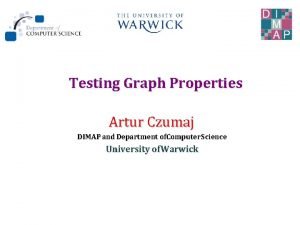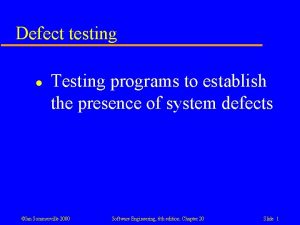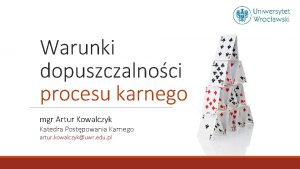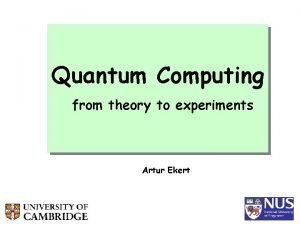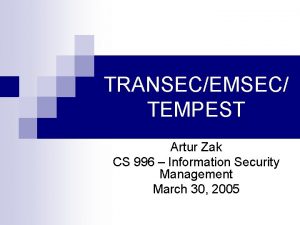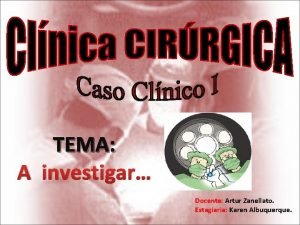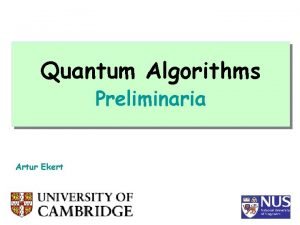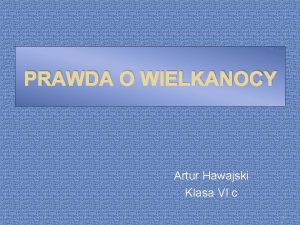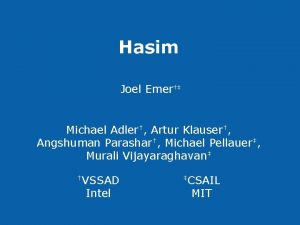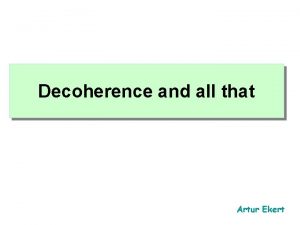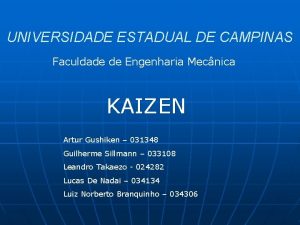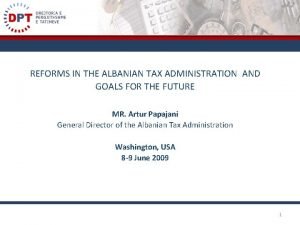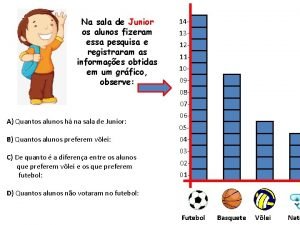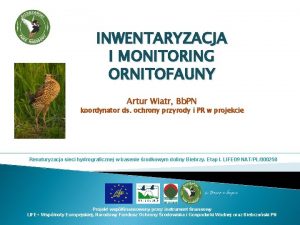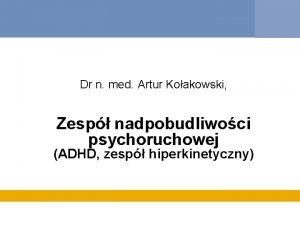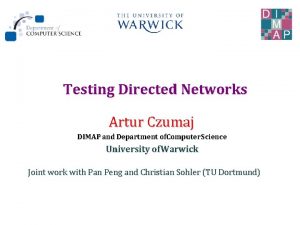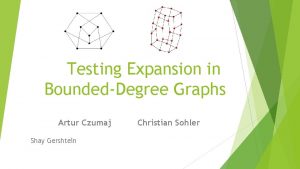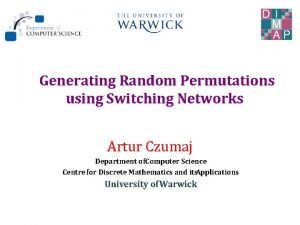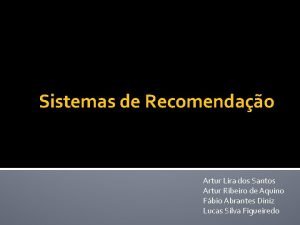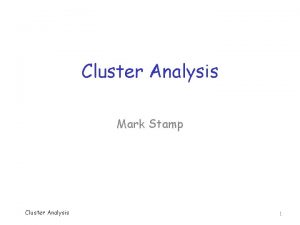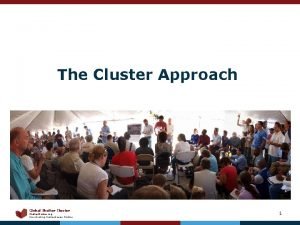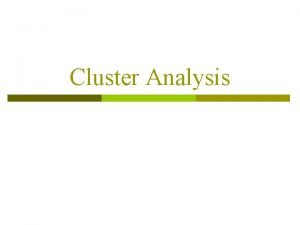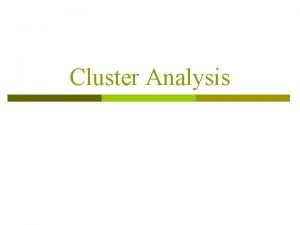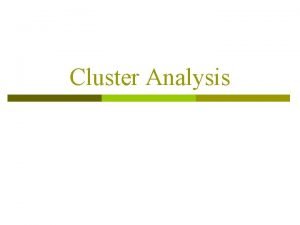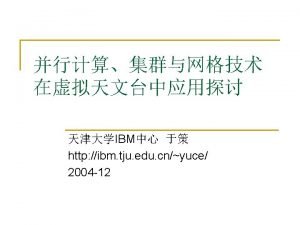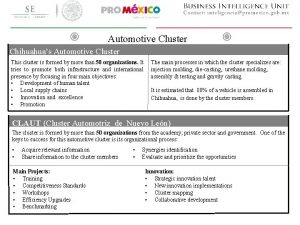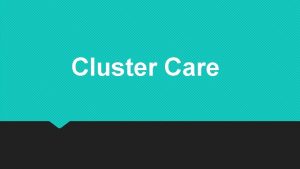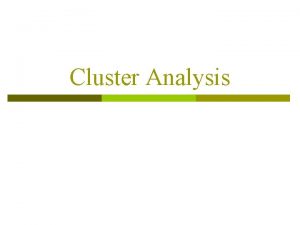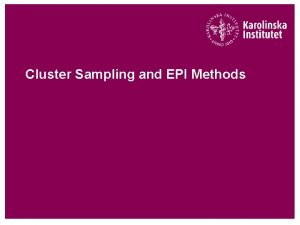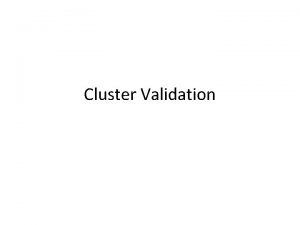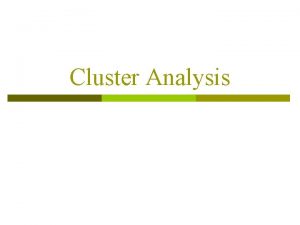Testing Cluster Structure of Graphs Artur Czumaj DIMAP








































- Slides: 40

Testing Cluster Structure of Graphs Artur Czumaj DIMAP and Department of. Computer Science University of Warwick Joint work with Pan Peng and Christian Sohler (TU Dortmund)

Dealing with “Big. Data” in Graphs • We want to process graphs quickly – Detect basic properties – Analyze their structure • For large graphs, by “quickly” we often would mean: in time constant or sublinear in the size of the graph

Dealing with “Big. Data” in Graphs One approach: • How to test basic properties of graphs in the framework of property testing

Fast Testing of Graph Properties • from Fan Chung’s web page

Clustering in graphs • What is a good clustering? from Fan Chung’s web page

Clustering in graphs • Same cluster: points are wellconnected • Different cluster: points are poorly connected from Fan Chung’s web page

Clustering in graphs Sublinear algorithms parameterized complexity

Clustering in graphs • Same cluster: points have high conductance • Different cluster: points are separated by a cut from Fan Chung’s web page


Conductance •



Framework of property testing • We cannot quickly give 100% precise answer • We need to approximate • Distinguish graphs that have specific property from those that are far from having the property

Framework •

Goal •



Testing expansion •


Testing expansion and clustering •

Testing expansion and clustering •

• We would like to have the following algorithm:




Key theorem •

Key properties (completeness) •

Key properties (completeness) • Convergence within a cluster We prove this using higher-order Cheeger’s inequality Key challenge: even if expect to stay inside the cluster in a large fraction of random walks, we can sometime leave the cluster and then we don’t have “easy” control over the distribution of endpoints.

Key properties (completeness) •

Key properties (completeness) • Convergence outside a cluster

Key properties (completeness) •

Key properties (completeness) • Bound for distribution for clusterable graphs

Key properties (completeness) •

Key properties (completeness) •

Key properties (soudness) •


Key properties (soudness) •

Key theorem •

Extensions •

Conclusions Clustering (or clusterability) can be tested fast • by comparing distributions of random walks • drawing conclusions from the distributions Tools: • Random sampling • Random walks • Spectral analysis
 Artur czumaj
Artur czumaj Artur czumaj
Artur czumaj Good state and bad state graphs in software testing
Good state and bad state graphs in software testing Control structure testing in software testing
Control structure testing in software testing Graphs that compare distance and time are called
Graphs that compare distance and time are called Graphs that enlighten and graphs that deceive
Graphs that enlighten and graphs that deceive Degree and leading coefficient
Degree and leading coefficient Integration testing software engineering
Integration testing software engineering Cluster testing in software engineering
Cluster testing in software engineering State state graphs and transition testing
State state graphs and transition testing Artur kowalczyk uwr
Artur kowalczyk uwr Slidetodoc
Slidetodoc Artur ekert
Artur ekert Artur steiner
Artur steiner Artur fojt
Artur fojt Arturroman
Arturroman Tempest separation requirements
Tempest separation requirements Artur zanellato
Artur zanellato Artur ekert
Artur ekert Artur ekert
Artur ekert Artur klauser
Artur klauser Artur ekert
Artur ekert Artur gushiken
Artur gushiken Artur papajani
Artur papajani Fukushima
Fukushima Observe o grafico de brinquedos de artur
Observe o grafico de brinquedos de artur Artur wiatr
Artur wiatr Dr artur kołakowski
Dr artur kołakowski Artur ortega
Artur ortega Domain testing in software testing methodologies
Domain testing in software testing methodologies Motivational overview of logic based testing
Motivational overview of logic based testing Data flow testing strategies in software testing
Data flow testing strategies in software testing Positive vs negative testing
Positive vs negative testing Static testing and dynamic testing
Static testing and dynamic testing Globalization testing example
Globalization testing example Neighborhood integration testing
Neighborhood integration testing Decision table testing in software testing
Decision table testing in software testing Decision table testing in software testing
Decision table testing in software testing What is decision table testing
What is decision table testing Jelaskan pengertian pengujian black box
Jelaskan pengertian pengujian black box Behavior testing adalah
Behavior testing adalah
